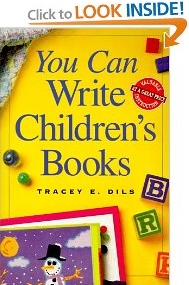How to Write a Children's Story
Writing a children's story requires a vivid imagination, good speech, enthusiastic creativity
and the ability to put yourself in the mind of a child. To write a children's story, follow
these guidelines.

1. Brainstorm story ideas. The story is perhaps the most important aspect of any good
book. Consult some of your favorite books (children's or otherwise) for inspiration, but do
what's right for you. Choose a story that fits your interests and talents, such as action,
fantasy, or mystery.
• If you have children, involve them in the brainstorming session. Say something like,
"What if you had to make your kitten go to bed and she didn't want to, what would you say?"
Or, "What would a dog do to avoid eating his vegetables?" What their minds will come up with
may send you into fits of laughter, or even a whole new direction and level of creativity!
• Part of the great fun of a children's story is that it doesn't need to be realistic.
With fabulous exceptions like the Lord of The Rings, etc., this is the biggest difference between
children's and adult books. Of course you can write about a talking mongoose! Sure you can
write about a human with a dog's head and three legs! Children will appreciate such absurdities.
2. Develop your characters. To have a good story, you need some interesting characters.
Who is the main character of the story? Is there more than one? Are the characters human, animal
or fantasy, or do they include elements of all three? Before you begin, make an outline of the
characters and how they fit into the story.
• You can also take a cue from J.R.R. Tolkien or J.K. Rowling, and create an entire world
that your characters inhabit. Even if a lot of that does not appear in your story, it will
inform your characters and help their actions make sense overall (even if it's nonsense—as
long as it fits in the framework of the world you've created).
3. Make sure your writing is age appropriate. For example, smaller children enjoy stories
with simple (or nonexistent) plots and plays on words (for example, a repeated phrase like,
"No, no fat cat. Scat! Scat! Scat!"). On the other hand, older children will want a more intricate
plot and a tone that treats them like they're not children. Since it"s harder to put oneself
in the mind of a very young child, consider some of these guidelines and example story themes
for very young readers:
• Ages 3 to 5 years: Use sentences with a low level of complexity that explain the motivation
behind actions shown on the page. Themes include: adventures; getting lost and finding your
way home; going to bed; fighting; being brave; sharing; telling the truth; thinking of others
before yourself; explaining how you feel; learning to spell; learning to add; telling parents
if someone hurts you or makes you feel bad; how to resolve arguments; disappointment; or dealing
with the loss of a parent, brother, or sister.
• Ages 5 to 7 years: Use bigger words but be careful to explain them so as not to frustrate
new readers. At this point, books can be long enough to read over two or three nights. Themes
that you can use might include overcoming challenges; learning new skills; understanding good
reasons to do something and bad reasons to do something; magic; or confusion. You can also
tickle their nascent rebellious streak, with stories about running away from home and joining
the circus; flying an airplane, or sneaking a popsicle.
| 
